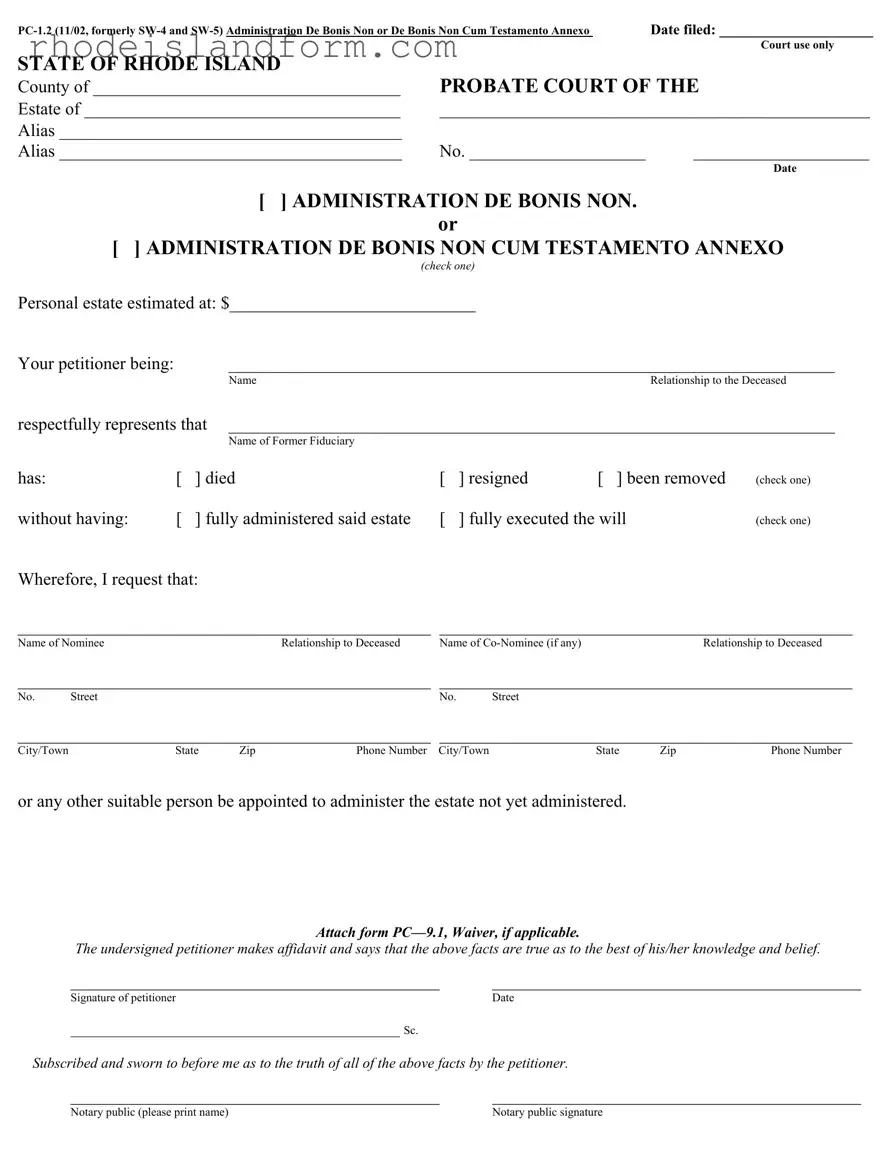What is the Rhode Island PC 1 2 form?
The Rhode Island PC 1 2 form, officially known as "Administration De Bonis Non or De Bonis Non Cum Testamento Annexo," is a legal document used in probate court. It is filed when a previous executor or administrator of an estate has passed away, resigned, or been removed without completing the administration of the estate or execution of the will. This form requests the appointment of a new person to continue and complete the process.
When should the Rhode Island PC 1 2 form be filed?
This form should be filed in situations where the initially appointed fiduciary (executor or administrator) can no longer fulfill their duties due to death, resignation, or removal, and the estate has not yet been fully administered or the will not fully executed.
Who can file the Rhode Island PC 1 2 form?
Any person with a vested interest in the deceased's estate, typically a successor fiduciary, family member, or potential heir, can file the Rhode Island PC 1 2 form. The petitioner must be able to demonstrate their relationship to the deceased or the estate and justify the need for a new administrator or executor.
What information is required on the Rhode Island PC 1 2 form?
The form requires detailed information including the name and county of the deceased, the estimated value of the personal estate, details of the former fiduciary, and the reason for their inability to continue. Additionally, the petitioner must propose a nominee (and co-nominee if applicable) to administer the estate, along with their relationship to the deceased. Contact information for all parties mentioned is also necessary.
Is there a filing fee for the Rhode Island PC 1 2 form?
Probate court filing fees vary by county in Rhode Island. It is advisable to contact the specific probate court where the form is being filed for information on current filing fees associated with the Rhode Island PC 1 2 form.
What happens after the Rhode Island PC 1 2 form is filed?
Once filed, the probate court will review the petition and any attached documentation, such as waivers from other potential heirs or interested parties. If the court finds the petition valid, it will issue a decree appointing the nominated person(s) as the new executor or administrator of the estate, with or without surety, and set a bond amount if applicable.
Can the filing of the Rhode Island PC 1 2 form be contested?
Yes, the filing can be contested. If another interested party disagrees with the appointment of the new executor or administrator, they may file an objection with the court. The court would then typically schedule a hearing to resolve the dispute.
What is the importance of the bond mentioned in the decree?
The bond is a financial assurance required by the court, designed to protect the estate from potential mismanagement by the newly appointed executor or administrator. The bond amount is typically based on the value of the estate. The requirement for a bond and its amount can vary depending on whether the appointment is made with or without surety.
How can I obtain the Rhode Island PC 1 2 form?
The Rhode Island PC 1 2 form can typically be obtained from the probate court in the county where the estate is being administered, or it may be available online through the court's official website. It is advisable to ensure you are using the most current version of the form by consulting with the probate court directly.
